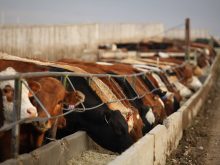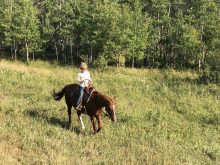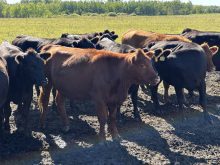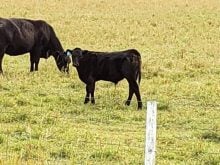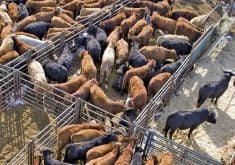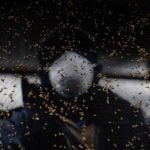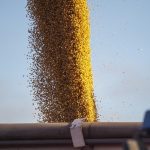Summer is not over and the pastures are full of flies, so when I drive down the highway and see cattle bunched up in a pasture, they are either trying to get away from the heat or from these annoying pests.
One of the most notorious pests is the face fly, the leading culprit for transmitting painful and contagious pinkeye. Despite all we know about pinkeye in cattle, it’s hard to control. It’s a matter of continuous vigilance in treating cases as they pop up, but more importantly implement an action plan to reduce its incidence.
A friend who runs about 400 beef cows learned a valuable lesson on just how pinkeye can run amuck in a beef herd. It happened a few years ago in mid-August, when he noticed that many of a group of 70 replacement heifers rotational grazing tall prairie grass had excessive tearing in at least one eye. Some of these “criers” also had a clouded eye. In the past, he had successfully treated one or two cases of pinkeye with antibiotics and an eye patch, so he knew the importance of quick treatment to save any infected eyes.
Read Also

Gentle treatments for pain in the neck
Heading toward year-end, people unknowingly tense up against the cold and busyness, causing neck pain that can often be treated with appropriate support and gentle mobility, athletic therapist Kathlyn Hossack says.
It was no secret to him and to most people who raise cattle that face flies and pinkeye go together. In this way, face flies play a major role in the rapid transmission of Moraxella bovis pinkeye bacteria among cattle as they fly from one animal to another. These flies cause small scratches on the conjunctiva and corneas of the eyes when they feed, which makes it easier for the bacterium to enter and infect healthy eye tissues. Unlike biting horn flies, face flies spend only about 10 per cent of their adult life on the head of cattle. They are usually found on fences, trees and other objects.
Once infected with pinkeye, the eye starts to inflame and manifest into a progressive ulcer, which spreads across cornea, clouding it over. If the infection is left untreated, the inside of the eye also fills in with a pus-like material called fibrin. Often there is final rupture of the cornea, which ends in permanent blindness. As mentioned above, my friend had no blind animals, because he was quick to treat all his pinkeye cases with a vet-recommended antibiotic program.
Options to reduce outbreaks
Here are a few things my friend did to reduce the incidence of pinkeye in his cow herd so he wouldn’t have a repeat of that terrible summer. Note that one of these suggestions may work better on some farms than others.
- Avoid tall-grass pastures during heavy fly seasons. Another producer that I know made the connection between putting her cattle in tall-grass pastures and the cases of pinkeye. She felt that cattle tended to scratch their eyes grazing them, which attracted face flies.
- Insecticides are effective. They are still a popular way of decreasing summer populations of face flies that transmit pinkeye. Back-rubbers and dust-bags are a reliable means of distributing either organophosphate or pyrethroid products which are advertised as registered guarantees of controlling face flies on cattle.
- Feed a garlic mineral. Many producers are taking a natural approach to reducing pinkeye by providing salt or cattle mineral with added garlic that helps to repel face flies. My experience is that added garlic oils are more effective against face flies than added garlic powders. Note: controlled studies find garlic does not control biting horn flies, but they do not transmit pinkeye.
- Consider feeding a larvicide. Some face flies are known to lay their eggs in cattle manure, so a larvicide might be an effective way to control the pest in manure. One or two larvicides available on the Canadian market list biting horn fly control as well as face fly control on their label.
- Pinkeye vaccines. There are vaccines registered to prevent M. bovis, which causes the pinkeye disease. Unfortunately, M. bovis has multiple types and strains in which some commercial vaccines are ineffective. Plus, it often takes two doses to develop full immunity, which may not be practical to implement on pasture.
The funny thing is that a friend vaccinates all of his cow herd, bulls and replacement heifers for pinkeye. He knows of their limitations, but he sees it as one tool to be used in combination with these other pinkeye preventatives. If you can prevent a pinkeye outbreak or even save a few animals from this painful disease, you have succeeded in controlling and giving pinkeye a black eye.




